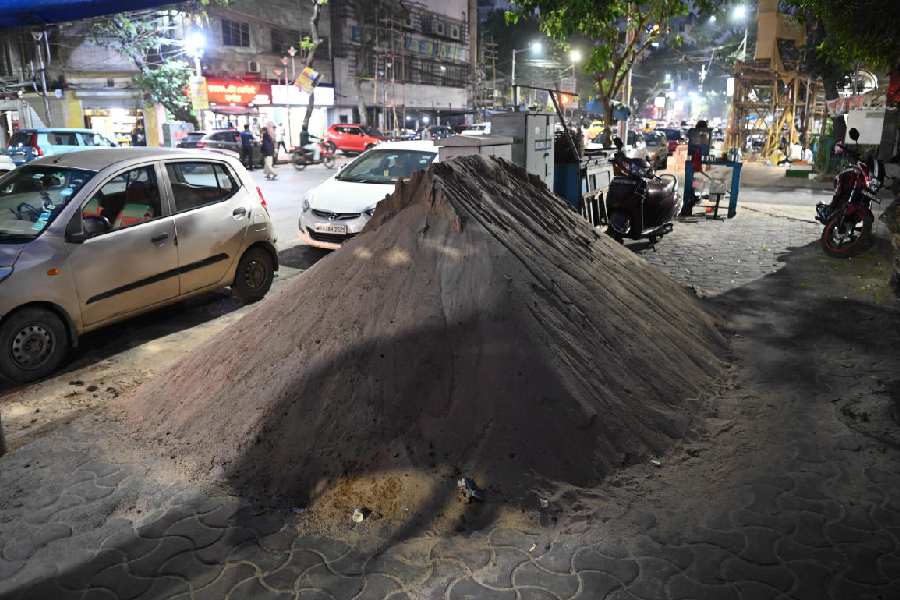Calcutta: The Calcutta Municipal Corporation (CMC) on Friday informed all engineers and architects whose names feature on applications for real estate projects or building plan approval about measures they are expected to take to control dust emission from the sites.
A series of circulars sent to the engineers also mentions the penalty to be imposed on the projects if they did not take the measures.
Metro reported on Tuesday that construction and demolition sites across the city were operating without any cover. This allowed dust from the sites to spread and pollute the air.
Mayor Firhad Hakim had then told this newspaper that he would ask the building department to issue a stop-work notice for under-construction buildings where the guidelines were being violated.
On Friday, the building department of the CMC re-sent the old circulars to the engineers reminding them that the measures are mandatory.
“Many construction sites are not following the guidelines. We re-sent the guidelines to them and also reminded them about the penalties they may have to pay if they flout the guidelines,” said a senior official of the CMC.
Some of the measures mentioned in the guidelines included covering the construction site with geotextile fabric, applying water so that the soil is damp, cleaning the wheels and undercarriage of trucks before they leave a site; and limiting vehicle speed within construction sites to 24km an hour (15 miles an hour) so the moving vehicle does not raise dust.
The guidelines also mention that construction materials like cement and sand should not be kept uncovered. These materials should not be kept on the road either.
The penalty for violation ranges from Rs 2,000 to
Rs 50,000 a day. A site with a total floor area between 200 and 500 square metre will have to pay Rs 2,000 a day for not taking the measures, while a project with a total floor area of more than 25,000sqm (2,69,000sqft) will have to pay Rs 50,000 a day.
The penalty will keep adding till the measures are taken, said a CMC official.
Dust emanating from construction sites is a major contributor to PM10 and PM2.5, said a scientist with the state pollution control board (PCB).
PM2.5 refers to particulates that are less than 2.5 micron in size and PM10 refers to particulates that are between 2.5 and 10 micron in size.
An air pollution management specialist said that while the dust at construction sites comprises coarser particles, they could eventually break down into smaller PM2.5.
Another expert said dust rising from construction and demolition sites include soil, sand and cement particles. These have high concentrations of calcium, iron and silicon, all of which are toxic. They are harmful to breathe in.
Some of the air quality monitoring stations in Calcutta have already recorded “very poor” air on certain days this season.
Scientists said the concern during winter months was that pollutants get trapped closer to the ground. Humans and other living beings breathe this polluted air. During the monsoon, rain washes away some of the pollutants. Warmer temperatures and stronger winds disperse the pollutants faster duringsummer.
The CMC guidelines also mention that construction projects with a plot area of 500sqm (7.5 cottahs) ormore should install a sensor-based air quality monitoring system.
A scientist at the pollution control board said construction sites are a major contributor to air pollution.
“If they install sensor-based monitoring systems, we will be able to monitor the PM2.5 and PM10 levels close to the sites. Engineers of the companies building the projects can monitor the situation themselves. If they know the reality, they will be able to take corrective measures,” the scientistsaid.
